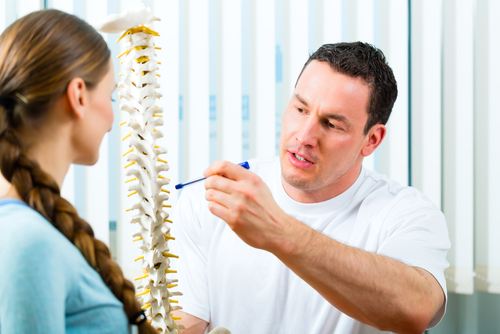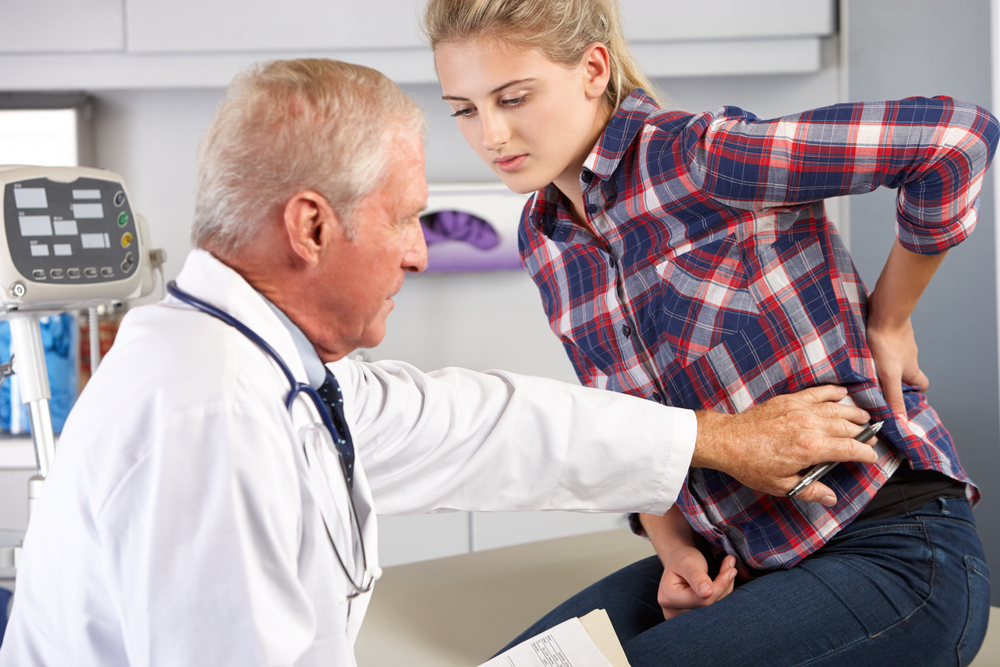 Most adults at some point throughout their life will develop low back pain. In fact, the chance is fairly high with most studies putting the likelihood at 80 percent. The incidence of low back pain in adolescents has been estimated to be in the range of 15 to 20 percent. This rate increases depending on risk factors present particularly in the adolescent athlete.
Most adults at some point throughout their life will develop low back pain. In fact, the chance is fairly high with most studies putting the likelihood at 80 percent. The incidence of low back pain in adolescents has been estimated to be in the range of 15 to 20 percent. This rate increases depending on risk factors present particularly in the adolescent athlete.
Participation in certain sports tends to increase the incidence of low back pain. These sports include gymnastics, hockey, soccer, field hockey and lacrosse. In addition, high school wrestlers and football interior lineman put their bodies in particular positions that could increase the likelihood of developing acute low back pain. When you examine the postures and positions required for any of these sports, you will see a common pattern of excessive twisting, repeated forward bending and/or high velocity back bending.
The most common injury to the low back area is a sprain or muscular strain. This can develop with awkward positioning of the spine or an abnormal muscular contraction to maintain the body position during a sporting activity. These injuries typically will result in localized low back pain and may or may not result in associated muscle spasm. A typical treatment is rest with pain-free activities to allow the tissues time to heal and then slowly institute a spinal range of motion program and stabilization exercises to support the injured area. Bracing and/or taping can be beneficial for the highly competitive athlete that needs a rapid return to sport. However, this rapid return to sport is not always recommended because of the increased likelihood of re-injury.
The incidence of low back injury is much less in adolescents compared to adults. This has to do with the general health of the intervertebral disc along with high viscosity of the disc material which reduces compression forces. The typical cause of low back disc injury or herniations are repeated movements and risky postures during exertion. It is also important to realize that leg pain is not exclusive to disc injuries, and a thorough examination is required to determine the origin of the leg pain or “radiculopathy. ”This is often characterized by impingement of lumbar nerve roots either by inflammation, compression, stretch or muscle spasm. Treatment for these injuries is really based on a mechanical approach of directional preference in which a skilled clinician attempts to centralize the adolescent’s pain through repeated movements that control stress on the disc and its associated nerve root.
T here are two other spinal disorders that deserve mentioning when discussing low back pain in this age group. Spondylolisthesis is when a vertebrae slips forward in relation to the vertebrae above and below that level. This problem tends to occur with high velocity backward bending quite often seen in female gymnasts. The treatment approach is to stabilize the spine initially with bracing and rest; and then teaching stabilization exercises to decrease stress on the spine. The last disorder to discuss is Scheuermann’s disease. This is a developmental condition in which there is vertebral wedging of the bones. This problem can occur in somebody that has a “swayback” posture or increased curvature in the upper back along with increased lordosis or “hollowing” of the low back.
here are two other spinal disorders that deserve mentioning when discussing low back pain in this age group. Spondylolisthesis is when a vertebrae slips forward in relation to the vertebrae above and below that level. This problem tends to occur with high velocity backward bending quite often seen in female gymnasts. The treatment approach is to stabilize the spine initially with bracing and rest; and then teaching stabilization exercises to decrease stress on the spine. The last disorder to discuss is Scheuermann’s disease. This is a developmental condition in which there is vertebral wedging of the bones. This problem can occur in somebody that has a “swayback” posture or increased curvature in the upper back along with increased lordosis or “hollowing” of the low back.
Low back pain in the adolescent athlete can often be reduced by teaching good body mechanics, demonstrating good postural awareness, working on a lower extremity flexibility program and incorporating a spinal stabilization program in their regular fitness routine. Early intervention is important to clarify the diagnosis and the appropriate treatment before a subsequent return to sports without increasing the risk of reinjury.
Source: www. gmnews. com; David Bertone; November 6, 2014.







